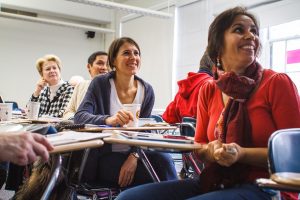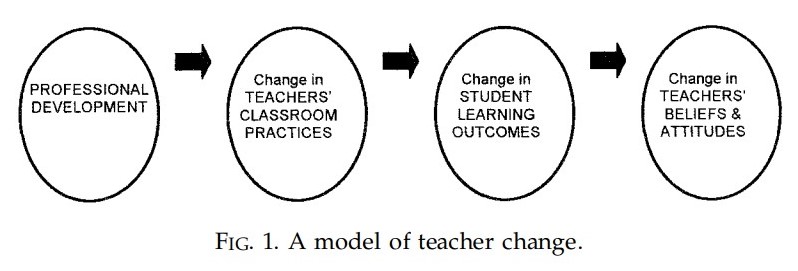Hord and colleagues identified key features of collegial learning communities: supportive and shared leadership, collective learning, shared values and vision, supportive conditions, and shared personal practice (1998). Our Institute programming integrates many of the features mentioned above to invite changes in participants’ teaching practices and offers relevant and diverse professional development opportunities; however, participants’ need to be connected with one another and to engage in conversations with their peers does not seems to be adequately addressed in its current format as a series of workshops.
Seeing that the participants have already committed their time to attend the Institute, one strategy to maximize the value of these face-to-face meetings is to build-in opportunities for meaningful interaction to foster a sense of belonging to the larger teaching and learning community – with goals to increase faculty interest in teaching and learning, as well as to provide a supportive space for faculty to explore, evaluate, and adopt new instructional practices and tools (Cox, 2001). As well, Palmer (1999) strongly supports collegial socialization as a core component of professional development programs.

Thus, the Space of Connection was developed to provide an unstructured space for participants to continue to engage in the rich teaching and learning conversations that emerged during workshops, to integrate their learning into their own contexts before returning attention to other commitments, and to simply connect with one another throughout the Institute.
The general features of the Space of Connection include:
- reflection question on flipcharts relating to sessions on offer that day to invite participant responses,
- a general handout designed to support participants’ process in implementing new teaching techniques/strategies in their teaching contexts, and
- chairs in pods for casual conversations and connections.
For the upcoming Summer Institute, I will facilitate a networking session in the Space of Connection to encourage participant reflection (for their learning during the week and relating to their teaching practice beyond the Institute) and to set the tone for the week – inviting peer-to-peer learning, promote relationship building, and knowledge sharing in an unstructured space. I am eager to see how the participants utilize this space and to hear their thoughts/experience/feedback!
References:
- Cox, M. D. (2001). Faculty learning communities: Change agents for transforming institutions into learning organizations. To Improve the Academy, 19, 69-93.
- Hord, S., Hall, G., Rutherford, W., and Huling-Austin, L. (1998). Taking charge of change. Austin, TX.: Southwest Development Lab.
- Palmer. P. (1999). The Courage to Teach. San Francisco: Jossey-Bass.

